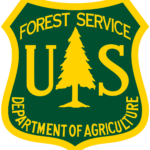Widgetized Section
Go to Admin » Appearance » Widgets » and move Gabfire Widget: Social into that MastheadOverlay zone
Forest Service to hold meetings on tree thinning projects in Eagle, Summit counties
The White River National Forest this week issued the following press release on two meetings to inform the public on two upcoming forest thinning projects in Eagle and Summit counties:
GLENWOOD SPRINGS, Colo. (Sept. 21, 2022) – The White River National Forest is hosting two informational meetings about areas proposed for thinning within Eagle and Summit counties in 2023 under the White River National Forest Health and Fuels Management Project.

The open house meetings will be held Sept. 27 from 2-4:30 p.m. at the Dillon Ranger District, 680 Blue River Parkway in Silverthorne, and Sept. 29 from 3-5:30 p.m. at the Eagle-Holy Cross Ranger District, 24747 U.S. 24 in Minturn.
“We want to let the public know what areas we are planning to thin in Eagle and Summit counties in 2023 under this plan as well as listen to any feedback they may have for us,” said Forester Shelby Limberis.
Proposed treatment areas in Eagle County include locations on Meadow Mountain, Grouse Creek, Tigiwon and the No Name area near Camp Hale. In Summit County, proposed treatment units include Boulder Creek/Harrigan Creek, Maryland Creek, Frisco Peninsula, South Barton Creek and Wise Mountain.
In July 2021, the White River National Forest approved the Forest Health and Fuels Management Project to maintain areas across the forest that were thinned several decades ago, including critical fuel breaks and other treatment areas.
Under the decision, up to 10,000 acres of National Forest System lands could be thinned over the next 15 years to improve forest health and maintain fuel breaks. No more than 1,000 acres would be treated in any one year across the forest. The Forest Service will prioritize areas to be treated on an annual basis.
Many lodgepole pine stands cut in the mid-1980s through the mid-1990s have regenerated with dense, young lodgepole trees. Other areas that were cut to address a spruce beetle epidemic and replanted with Engelmann spruce are seeing a high amount of sub-alpine fir regenerating. Thinning these areas will reduce competition and promote individual tree growth to improve forest health.
Lodgepole pine is also regenerating in fuel breaks near communities, and these areas need to be thinned to continue to be effective.
The decision is available at https://www.fs.usda.gov/project/?project=55257.


